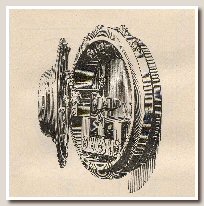Hakon Brunius
Hakon had previously worked as a telegraphist, both at Telegrafverket and the State Railways, but seems to have been mostly interested in his own technical experiments.
He developed an early piece of safety equipment for railway trains, fire alarms etc, and carried out early experiments on electrical lighting; Brunius was even referred to as “Sweden’s first electrician” in the magazine Industritidningen Norden.
When rumour of the emergence of the telephone and its construction spread in the autumn of 1877, Brunius immediately started to experiment. At the end of November, the local papers in Jönköping wrote about how his telephones, probably made by his own hands, having been successfully tested on 27 November.
Brunius managed to sell such telephones to Jönköping Waterworks in March 1878 and already before then, Munksjö paper mill had obtained an internal telephone line with Hakon’s help.
Brunius also started early on to argue for telephone networks to be established both in Stockholm and in Jönköping, but it was first in the late autumn in 1881 that some thirty subscribers joined him and the first network could be established in Jönköping, one year following the Bell network in Stockholm.
During this time, Brunius himself had moved to Kyrkekvarn and launched ”Hakon Brunius AB, Göteborg” for the purpose of producing electrical devices in larger scale.
Hakon Brunius was the one who, with a little help from his brother, actually built and operated the Jönköping network, but the development was modest and in 1888 the network was sold to Stockholms Allmänna Telefon AB, only to be acquired by Telegrafverket three years later.

It seems as though Brunius sheltered the predestined inventor’s restless soul and therefore did not have the sense for systematic and financial long-term entrepreneurship. Instead, he greedily and curiously examined every phenomenon at the time. Symptomatically enough, Haakon Brunius passed away in 1902 after, driven by curiosity, having opened and stepped through a door at the hospital where he temporarily was being treated. It happened to be an elevator door, and the elevator was not there.